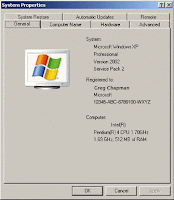
Conquer Mt. Apo, tallest peak in the Philippines at 9,691 feet above sea level, the mightiest upward surge of a long mountain range extending from Cotabato, Davao del Sur and Davao City to Agusan and Misamis Oriental in Northern Mindanao.
The volcanic peak Apo, meaning "grandfather", dominates a vast area of 72,796 hectares where natural wonders lure outdoor enthusiasts to trek through this tribal god's domain and conquer this towering peak.
From the jump-off point at Lake Agko, 3,937 feet above sea level, the trail winds up the canyon of the swift-flowing Marbel River over rocks and boulders, jumping from stone to stone for a total of 13 crossings.
Along the way trekkers will see an exotic display of nature at its best -- lush tropical forest dotted with hot and cold springs; the crystal clear and the boiling blue mountain lakes; hidden waterfalls cascading with thunderous roar; sulfur craters; orchids and wild flowers; monkey-eating eagles; the soul-refreshing symphonies of cicadas and God's littlest creatures, and all -- truly an exceptional display of nature in its primeval state.
Bright, dainty wildflowers and orchids clash with the forest green; golden fields of "udand-udang" -- flower-flocked meadowlands, are a welcome sight as the tiny flowers nod their heads in the dazzling sunlight.
There are miniature as well as giant pitcher plants, cinnamon trees and huge centuried and moss-covered trees of darkly-cooled, sunshielded fern forests.
Towards the summit is Lake Venado hidden among the mountain fastness at about 8,000 feet above sea level. Its crystal-clear water mirrors the twin peaks of Mt. Apo.
At the peak linger awhile and take a deep breath. You may even shout to your heart's content as many past conguerers of Mt. Apo often did. But to complete your conquest , run westward and up towards the summit overlooking the the town of Kidapawan. From there you can view the vastness and wide expanse of Mindanao. From that point also you will see and realize how lowly you once had been.
------------------------
Getting There
Kidapawan is on the main highway between Davao City and Cotabato City approximately 3-hours by bus from either direction. Comfortable aircon buses run in both directions and charge about P60 one-way.
At Kidapawan, take a tricycle (motorcycle w/ sidecar) to the Kidapawan Tourism Council at the Museum Bldg., JP Laurel St., for registration and briefing. The registration fee is P20 for Filipinos and P50 for foreigners and includes a Certificate of Climb.
Jeepneys and buses ply the 1-hour route between Kidapawan and Ilomavis and charge about P30. Groups may want to charter a jeepney for approx. P500 and arrange to be picked up. Regular jeepneys may not go all the way to Lake Agko which is 5-km and 1500 feet up a steep road from Ilomavis. The Philippine National Oil Company operates a geothermal plant near Lake Agko and it's possible to hitch rides if you don't mind riding in the back of a dump truck.
Porters/guides can be hired at the Lake Agko Campsite. This is also the home of Aurelio Ayag the president of the local guide association. The porterage fee is P100/day if meals are provided or P120 without.
Suggested Trek Schedule
DAY 1 1000 Registration & Briefing - Kidapawan Tourism Council Office. 1100 Free Time (Climbers may buy additional provisions for the trek). 1200 Lunch. 1300 Take jeepney to Ilomavis and Lake Agko. Arrange for porters. Camp overnight.
DAY 2 0600 Breakfast. 0700 Start hike up the Marbel River. 1000 Arrive at Mainit Hot Springs. Take side trip to view waterfall. Take early lunch and fill water bottles. 1100 Start climb towards Lake Venado. Watch for wild monkeys high in the trees. 1500 Arrive at Lake Venado. Setup camp along shore.
DAY 3-4 0500 Early breakfast. 0600 Trek to the summit taking only water and snacks. Earlier "flashlight" climbs can be attempted. 0830 Arrive at summit. Explore the summit crater. 0930 Start back for Lake Venado. 1130 Arrive at Lake Venado. Lunch. Break camp. 1200 Start descent. 1530 Retrace steps down the Marbel River. 1700 Reach Lake Agko Campsite. Take jeepney back to Kidapawan or camp overnight at Lake Agko after soaking tired muscles in the hot pool.
For your information, Contact:
1. Kidapawan Tourism Council
Kidapawan museum Bldg.
J.P. Laurel St. Kidapawan, Cotabato
Tel. 818-31
2. Office of the Municipal Mayor
Kidapawan, Cotabato
Tel. 816-04
3. Department of Tourism
Regional Office XII, Lacoto Bldg.
Sinsuat Ave., Cotabato City
Tel. (064) 211110
Regional Office XI
Door No. 7 Magsaysay Park Complex
Sta. Ana District 8000 Davao City
Tel. (82) 221-0070; 221-6955
Read more...







































